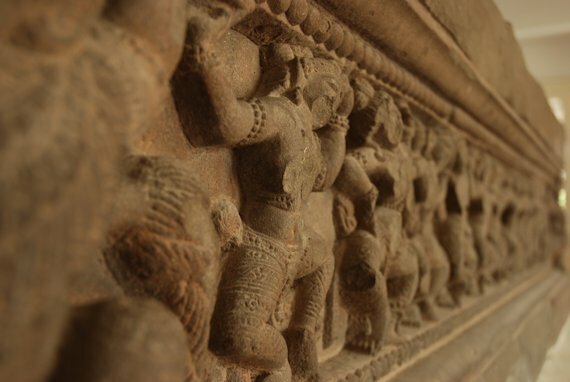Characteristics Of The Epic
Literature / / July 04, 2021
The epic forms a subgenre of the epic genre, it narrates feats and feats carried out by the characters of the same, characters who are called heroes. Epics are narratives of various epic events and events that generally have fantastic overtones, where divine or supernatural beings intervene. They can be based on real events exalted and transformed through time, or simply be stories invented by the peoples, forming an integral part of the traditions of the peoples to which they belong. They are usually written in the form of poems but there are also prose and have an extension relatively large compared to the stories and they highlight in detail the facts and events of it. They are sets of stories transmitted orally at first, which later become written and arranged in such a way that they coordinate the story or the stories they contain.
Some of the Characteristics that epics possess:

Invocation to the muse.- In the "Classic" epics, at the beginning, an invocation is made to the muse Calliope, to grant inspiration to the poet who narrates or writes the epic narrative.
Home In Media Res.- In epics it is common for the narration of the events and vicissitudes that make it up to begin, with the “plot” already advanced, this type of beginning is called “In Media Res beginning”.
Division in hexameters of the epic verses.- The first epics (which possibly existed since the so-called stone age), were transmitted orally, evolving over time to be versified, and it is in this way that they came to be written when the writing. Already in the times of the Greeks, the epic poems have a structure based on hexameters, establishing a metric in the versification of the stories. Later, although they continued to be written in verse, the epics began to be written in prose.
Great extension of the narrations.- The epics, unlike most of the primitive tales and some myths, have a greater extension, (the ancient epics are generally part of the mythologies), being detailed in the narration of the facts, events and circumstances that happen to the characters, as can be observed in a great variety of works of this gender.
Theme.- The themes that we find in the epics are basically two, the narration of wars and travels; the events and vicissitudes narrated in the different epics are usually linked to characters such as gods, heroes such as demigods or mythical men who possess outstanding abilities such as superhuman strength, and others, in which the men and women who star in the story are themselves who overcome their own limitations human rights (economic, political, ethnic, linguistic, cultural, etc.) and the obstacles that come their way, managing to overcome and overcome the situations in which they find themselves wrapped.
Divine or supernatural interventions. There are usually frequent Interventions of the gods and other extraordinary beings; it is common to find within the epics, interferences favorable or unfavorable to the protagonists and others characters, by gods, or beings with extraordinary qualities, such as monsters, spirits, ghosts, or "the destination".
Heroes.- The characters of the epics (the heroes), can be real or mythical; surely in primitive cultures, when recounting the exploits of some of its members, aptitudes and qualities were added to them fantastic, eventually becoming mythical beings with extraordinary qualities, as in the cases of the Gilgamesh heroes or enkidu from the Sumerian epic of Gilgamesh, Hector, Achilles and Odysseus from the Greek epics of the Ilead and the Odyssey, or of Aeneas in the epic Latin of the Aeneid, who were attributed forces, intelligence and courage, over humans, and in the same way in other types of epics to the heroes of the same.
They belong to the cultural manifestations of the peoples. Epics are an integral part of the cultures of various peoples, they tell part of the origin of their traditions or of the origin of the people themselves. In them there are cultural manifestations, religious and popular traditions of the people to which the epic belongs, and they themselves form part of the popular idiosyncrasy of the populations. For example the Aztec epic where the pilgrimage and the vicissitudes of the Mexica are related before establishing themselves and becoming a city and then an empire.
Exaltation of values.- In both the ancient epics and the recent epics, values and aptitudes are exalted such as strength, honesty, fidelity, cunning, patience, perseverance, friendship, love, family, honor, intelligence, speed, and others more. Values or virtues that are embodied in the heroes and various characters of these stories. Examples of this type of values can be observed in some epics such as the Odyssey, where family values and marital fidelity are a central part of the plot.
Didactic sense.- The epics have a sense not only of entertainment, but also didactic, both in the teaching of moral values, introducing in the stories facts that usually have real bases although they are deformed by the fantasy. They also teach, rites, customs and various manifestations of the culture that makes the stories, which are focused on attracting attention and educate later generations, first through oral traditions and then through the invention of writing, through the written transmission of the stories.
New Approaches in Epics.- In times closer to the present, the epics were abandoning the magical-religious touch that characterized them since ancient times, ceasing to have interventions of divinities or other beings both in favor and against the characters, although a "fight against destiny" is maintained, with more realistic elements, mainly from the 19th century, and also having a greater rise of heroes, who came from the "middle" or "vulgar" classes, who stood out and obtained prestige, social, military, or moral, through their actions and values. This is the case of the Napoleonic epics, where the great feats achieved by the emperor stand out. of the French, as well as the obstacles that he had to overcome even from the first years of his career military.



